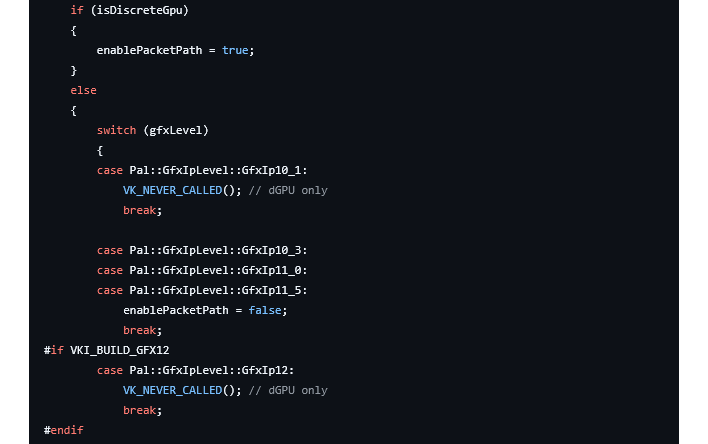AMD Zen 6 APU Driver Tips Graphics Architecture And It's Not RDNA 4
We know it's wrong because AMD has updated the GPUOpen platform's Vulkan API layer with fresh support for RDNA 4, and that support comes along with a note that says "dGPU only" for graphics hardware based on AMD's gfx12 architecture—that is, RDNA 4. Here, you can see it for yourself:

This was spotted by regular leaksman Kepler (@Kepler_L2 on Xwitter), who simply said "No RDNA4 APUs🤔". Of course, this doesn't strictly confirm that; it's always possible that AMD could update the API layer again later. Still, it's a pretty good bet considering that another leakfellow, the so-called Golden Pig Upgrade Pack, told us back in April of last year that "the APU's graphics core will remain on RDNA 3+."

By "RDNA 3+," he of course refers to RDNA 3.5, the graphics architecture used in AMD's extant Strix Point and Strix Halo processors. RDNA 3.5 represents a step back from RDNA 3 in terms of raw compute horsepower in favor of an emphasis on efficient gaming graphics speed. To that end, it offers incredible efficiency in Strix Halo, where an 80W APU is able to match the CPU horsepower of the latest Intel CPUs while cranking out graphics on par with a GeForce RTX 4070 mobile part.
Still, the other part of the earlier rumors, claiming that Medusa Point would use an eight-WGP GPU, aligns with Golden Pig's statements, where he noted that he wasn't sure if AMD would increase the size of the GPU. Strix Point already uses eight WGPs, a configuration that is limited much more by power and memory bandwidth than by graphics horsepower. So saying, there's absolutely no need for a bigger GPU—just faster memory.

Why not RDNA 4 for Medusa Point? Well, for one thing, AMD can re-use the layout to some degree. The GPU in Strix Point is plenty potent, and the biggest gains in RDNA 4 are in ray-tracing and AI compute—areas where the integrated GPU of a mobile SoC aren't really expected to compete, anyway. It makes sense for AMD to stick with RDNA 3.5 a bit longer—likely through 2027, if Golden Pig Upgrade Pack is to be believed. Most likely, the next GPU upgrade we'll see in integrated graphics will be a move to UDNA instead.


